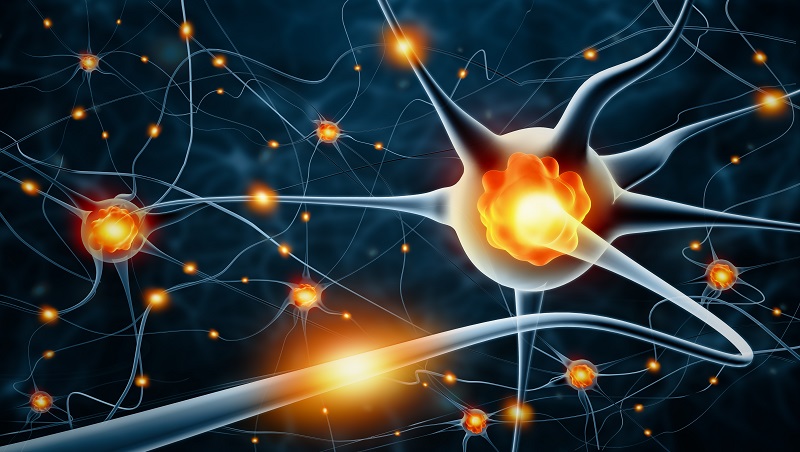What is the difference between dendrite and axon?
The nervous system has some nerve cells responsible for sensitivity. They play a vital role in the transmission of nerve impulses to various parts of the body.
The core difference between dendrite and axon is that dendrite receives the electrochemical impulses from the external environment while the axon sends electrochemical impulses to the external environment.

Comparison Table between Dendrite and Axon
| Basic Terms | Dendrite | Axon |
| Description | It is an expansion of nerve cells with short branch development and numerous in the cell | It is a projection of nerve cells which is long and slender. They tend to be single in a cell |
| Number | Numerous per neurons | Single per neuron |
| Occurrence | Arise from the receiving surfaces of the nerve | Arise from the discharging end of the nerve |
| Length | Comparatively shorter | Comparatively longer |
| Appearance | Highly branched throughout their length | Have a uniform thickness throughout their length |
| Branches | Occur throughout their length | Occur at the distal ending only. |
| Synaptic Knot | Absent | Present at the terminal branches |
| Ribosomes | Present | Absent |
| Nissl’s Granules | Present | Absent |
| Function | Conduct neuron impulses towards the soma | Conduct neuron impulses away from the soma |
What Is Dendrite?
Dendrites are the outgrowth part of a neuron. They have branches spread out like the shape of a tree. These branches are responsible for helping and supporting to receive impulse signals from other synapses.
The core significance of dendrite is to receive nerve impulses from other synapses and forward them to the body cell.
The electrochemical message is transmitted through special receptors in the form of neurotransmitters. These special receptors occur on the exterior of the dendrites.
The short projections and tapering ends happen to be the reason why dendrites are non-myelinated.
What Is Axon?
Axons are nerve fibers that are part of the neuron that carries signal informs of nerve impulses from the cell body to the external environment.
Each nerve cell has one axon which tends to be long and slender. They are connected with the other muscles, neurons, and gland cells.
Axons tend to be quite long and they are covered with myelin sheath which increases the transmission of impulses. The myelin is responsible for the white matter in the brain.
The side branches of axon help in the transmission of impulses to other neurons. The axon collaterals appear like the shape of the tree root.
Main Difference between Dendrite and Axon in Point Form
- Axon occur in a single form in each neuron whereas dendrite occur in numerous form in each neuron
- Dendrite arise from the receiving surface of the nerve whereas axon arises from the discharging end of the nerve
- Dendrite is comparatively short whereas axon is comparatively long
- Dendrite is highly branched throughout its length while axon thickness is uniform throughout its length.
- Axon has braches at the distal ending while dendrite has branches throughout its length
- The terminal branches of axon form enlarged synaptic knot while dendrites have no such vesicles
- Dendrites contain both neurofibrils and Nissl’s granules while axon has only neurofibrils.
- Dendrite receive messages from the external environment while axon sends messages from the body cell to the external environment
- Dendrites have ribosomes while axon does not have ribosomes
- Dendrite originate from the nerve cell whereas axon originates from the axon hillock
Similarities between Dendrite and Axon
- Both are part of neurons
- Both are cytoplasmic projections in the cell body
- Both conduct nerve impulses
- Both have branch structures
- Both have neurofibrils
Frequently Asked Questions (Dendrite vs Axon)
- Where Are Dendrites Found?
Situated on the neuron. It is responsible for receiving electrochemical impulses from the external environment and rely them on the axon hillock.
- What Age Does Dendrite Growth Stop?
Between 8-13 years. Once the growth stops, they generate small specialized protrusions known as dendritic spines for nerve impulse transmission.
- Do Dendrites Heal?
Absolutely. Growing dendrites is a normal healing process of the brain. It is also part of the normal learning process.
- Why Is Axon Important?
It is responsible for conducting electrical impulses away from the neuron’s cell body or soma. Axons are in effect the primary transmission lines of the nervous system.
- Why Is Axon Long?
Axon is long in order to reach every part of your body from the central regulating places in the brain and the spine.
You May Also Like:
- Difference between Open and Closed Circulatory System
- Difference between Cerebrum and Cerebellum
- Difference between Arteries and Veins
Comparison Video
Summary
The main difference between axon and dendrite is that axon is the efferent while dendrite is afferent components of the nerve cell. These two components work by sending and receiving nerve impulses.
More Sources and References
- Neuroscience. Science Direct
- Structures of Axon and Dendrites. Wiki Lecture.